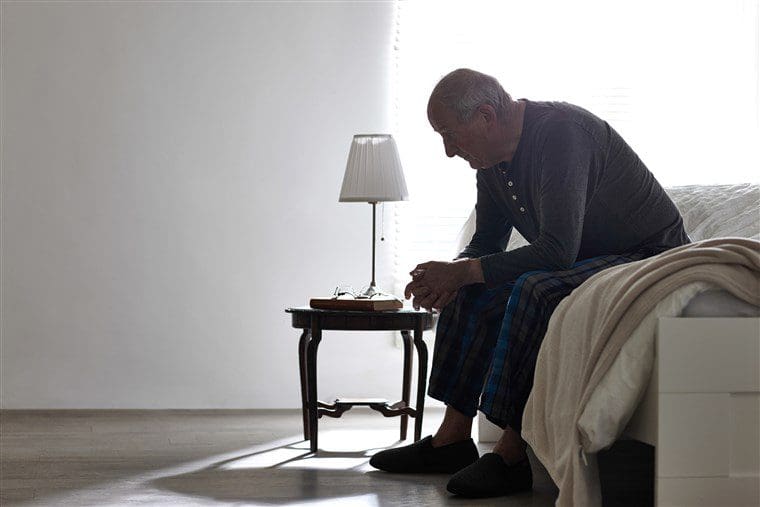Search Posts
Recent Posts
- Rhode Island Weather for June 4, 2025 – Jack Donnelly June 4, 2025
- Sour Grapes time! – Tim Jones (meet Tim at AnimeCon) June 4, 2025
- Lawsuit filed to stop Empire Wind Project by 4 environmental groups and fishermen June 4, 2025
- It is what it is: 6.4.25 – Jen Brien June 4, 2025
- New ALS treatment by PathMaker Neurosystems. Co. funded by RI Life Sciences Hub to come to RI. June 3, 2025
Categories
Subscribe!
Thanks for subscribing! Please check your email for further instructions.

Strategy for Combating Seniors’ Social Isolation and Loneliness – by Herb Weiss
By Herb Weiss, contributing writer on aging
Nearly one in four older adults residing in the community are socially isolated. Seniors who are experiencing social isolation or loneliness may face a higher risk of mortality, heart disease and depression, says a newly released report from the National Academies of Sciences, Engineering and Medicine (NASEM), a Washington, D.C. based nonprofit, nongovernmental organization.
For seniors who are homebound, have no family, friends or do not belong to community or faith groups, a medical appointment or home health visit may be one of the few social interactions they have, notes the NASEM report released on Feb. 27, 2020.
“Despite the profound health consequences — and the associated costs — the health care system remains an underused partner in preventing, identifying, and intervening for social isolation and loneliness among adults over age 50,” says the report.
“I’m pleased the AARP Foundation sponsored study by NASEM confirms the connection between social isolation or loneliness and death, heart disease and depression for older adults. It also finds that the health care system and community-based organizations have a critical role to play in intervening,” says AARP Foundation President Lisa Marsh Ryerson.
“We also know social isolation, like other social determinants of health, must be addressed to increase economic opportunity and well-being for low-income older adults,” says Ryerson.
Addressing Social Isolation and Loneliness
The 266-page NASEM report, “Social Isolation and Loneliness in Older Adults: Opportunities for the Health Care System,” undertaken by the Committee on the Health and Medical Dimensions of Social Isolation and loneliness in Older Adults, outlines five goals that the nation’s health care system should adopt to address the health impacts of social isolation and loneliness. It also offers 16 recommendations for strengthening health workforce education and training, leveraging digital health and health technology, improving community partnerships, and funding research in understudied areas.
Although social isolation is defined as an objective lack of social relationships, loneliness is a subjective perception, say the NASEM report’s authors. They note that not all older adults are isolated or lonely, but they are more likely to face predisposing factors such as living alone and the loss of loved ones. The issue may be compounded for LGBT, minority, and immigrant older adults, who may already face barriers to care, stigma and discrimination, the report says.
Social isolation and loneliness may also directly result from chronic illness, hearing or vision loss, or having mobility issues. In these instances, health care providers might be able to help prevent or reduce social isolation and loneliness by directly addressing the underlying health-related causes.
“Loneliness and social isolation aren’t just social issues — they can also affect a person’s physical and mental health, and the fabric of communities,” said Dan Blazer, J.P. Gibbons professor of Psychiatry Emeritus and professor of community and family medicine at Duke University, and chair of the committee that wrote the report in a statement announcing its release. “Addressing social isolation and loneliness is often the entry point for meeting seniors’ other social needs — like food, housing and transportation,” he says.
Providing a Road Map…
The 16 recommendations in this report provides a strategy as to how the health care system can identify seniors at risk of social isolation and loneliness, intervene and engage other community partners.
As to improving Clinical Care Delivery, the report calls for conducting assessments to identify at-risk individuals. Using validated tools, health care providers should perform periodic assessments, particularly after life events that may increase one’s risk (such as a geographic move or the loss of a spouse).
The NASEM report also recommends that social isolation be included in electronic health records (EHRs). If a patient is at risk for or already experiencing social isolation, providers should include assessment data in clear locations in the EHR or medical records.
It’s important to connect patients with social care or community programs, too. The NASEM report notes that several state Medicaid programs, and private insurers already have programs that target the social determinants of health. These programs can be more intentionally designed to address social isolation and loneliness of the older recipients. Health care organizations could also partner with ride-sharing programs to enable older adults to travel to medical appointments and community events, the report recommends.
The NASEM report also suggests that as more evidence becomes available, roles that health care providers are already performing — such as discharge planning, case management and transitional care planning — can be modified to directly address social isolation and loneliness in older adults. The report also details other interventions that the health care system might consider may include mindfulness training, cognitive behavioral therapy, and referring patients to peer support groups focused on volunteerism, fitness, or common experiences such as bereavement or widowhood.
Strengthening health professional education and training can be another strategy to combating the negative impacts of social isolation and loneliness. The NASEM report calls for schools of health professions and training programs for direct care workers (home health aides, nurse aides and personal care aides) to incorporate social isolation and loneliness in their curricula. Health professionals need to learn core content in areas such as the health impacts of social isolation and loneliness, assessment strategies, and referral options and processes, say the report’s authors.
The NASEM report warns that there are ethical implications for using health technology to reduce social isolation and loneliness. Technologies that are designed to help seniors — including smart home sensors, robots and handheld devices — might intensify loneliness and increase social isolation if they are not easy to use or attempt to substitute for human contact. Moreover, the report found that 67 percent of the current assistive technologies in dementia care were designed without considering their ethical implications. Developers of technology should properly assess and test new innovations, taking into account privacy, autonomy and the rural-urban digital divide.
The NASEM report says that more research is needed because of evidence gaps and calls for more funding of studies to determine the effectiveness of interventions in clinical settings; to develop measures to identify at-risk individuals; and identify trends among younger adults as they age (such as use of technology and economic trends) that may inform how the health care system should target social isolation and loneliness in the future.
More research is also needed to identify approaches and interventions that best meet the needs of LGBT and ethnic minority populations.
The National Academies are private, nonprofit institutions that provide independent, objective analysis and advice to the nation to solve complex problems and inform public policy decisions related to science, technology and medicine. They operate under an 1863 congressional charter to the National Academy of Sciences, signed by President Lincoln.
For a copy of the NASEM report, go to http://www.nap.edu/catalog/25663/social-isolation-and-loneliness-in-older-adults-opportunities-for-the
Published in the Woonsocket Call on March 1, 2020

Herb Weiss, LRI’12, is a Pawtucket writer covering aging, health care and medical issues. To purchase Taking Charge: Collected Stories on Aging Boldly, a collection of 79 of his weekly commentaries, go to herbweiss.com.
